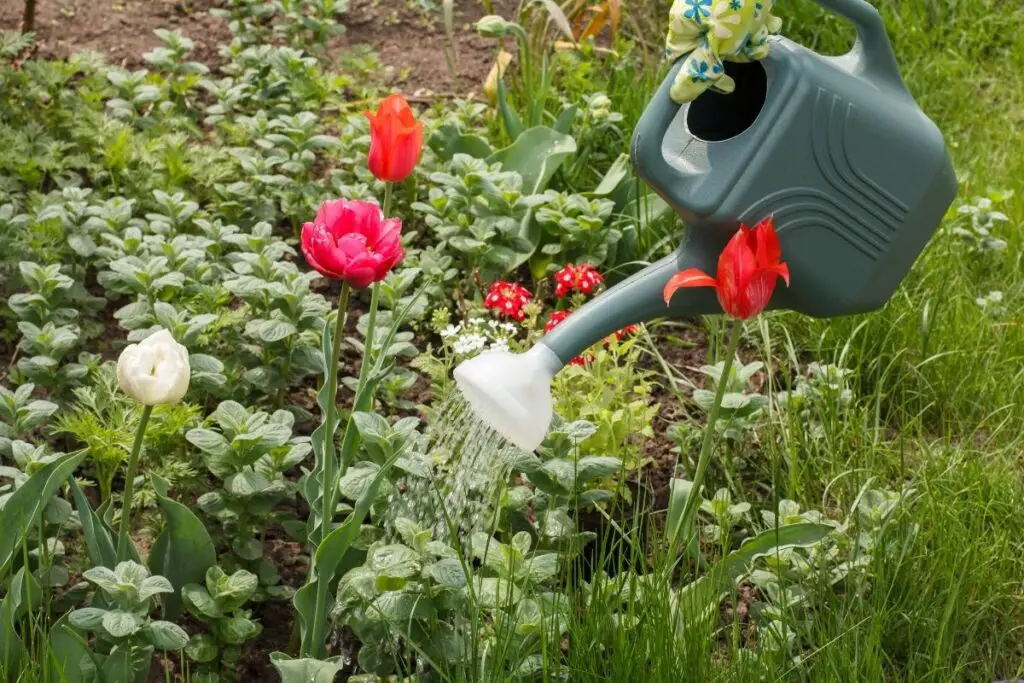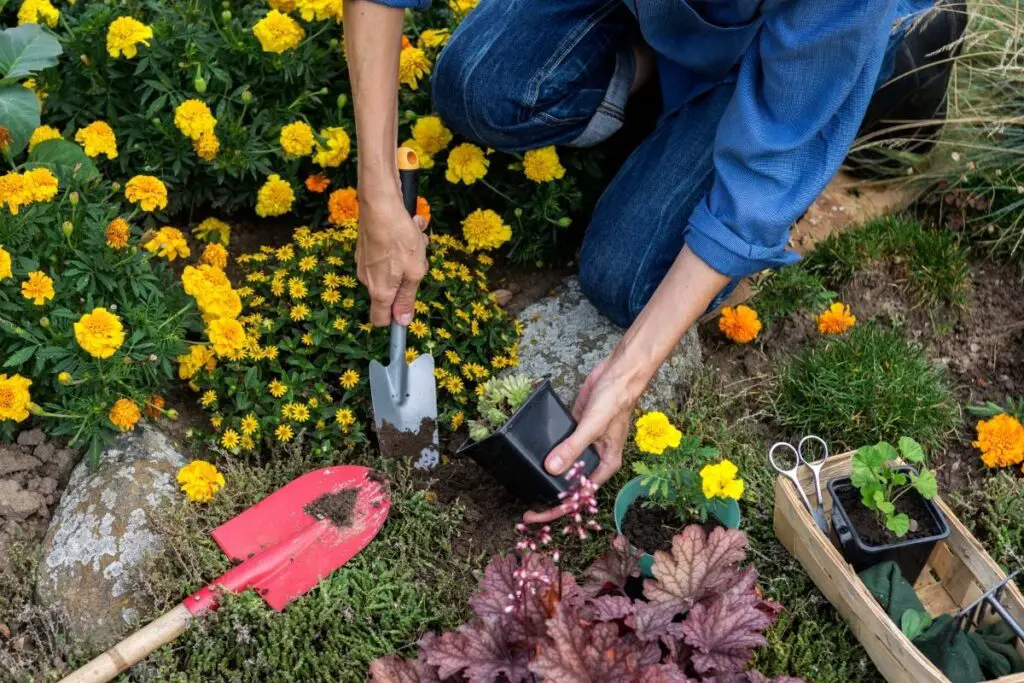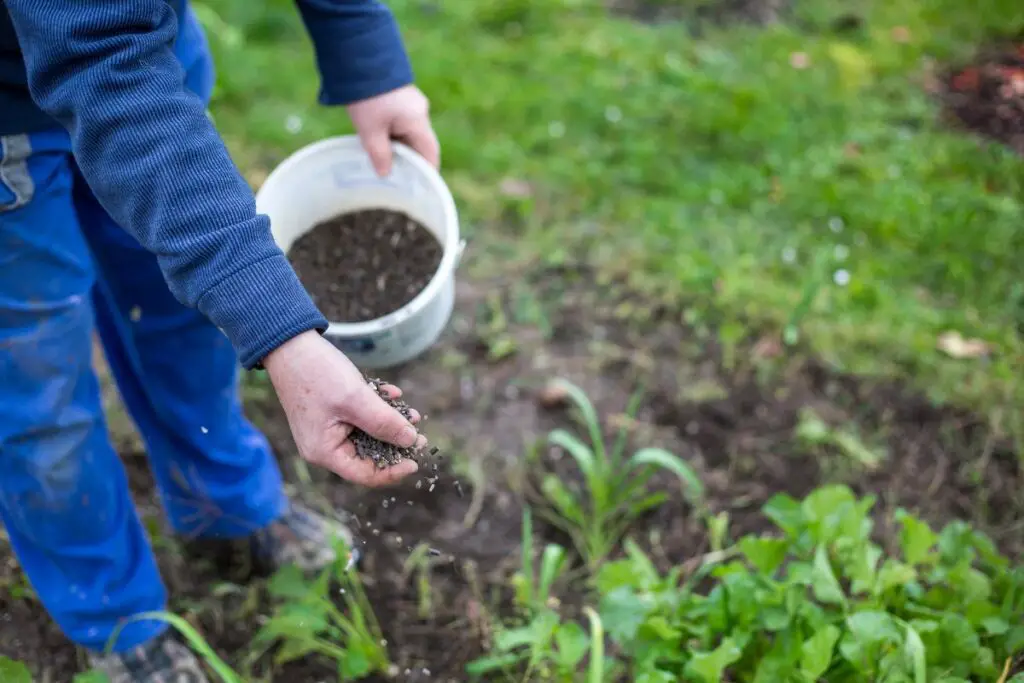Growing healthy plants is not that easy. Experts and beginners both witness the tragedy of seeing their beloved plants dying for unknown reasons. But why do nursery plants stay so healthy and look so good? Let’s find out.
Nursery plants look good because they grow in a controlled environment and receive watering, fertilizing, and everything else at the right time. The nursery workers also take care of the pest and diseased plants before spreading too much. Also, they use growth regulators to boost plant growth.
To understand why nursery plants look so perfect, read this article till the end. I will take you through their care and maintenance routine so you can try and follow the same things to keep your plant healthy and good-looking.

Why do nursery plants look so good and fresh?
Nurseries grow the best plants.
The plants remain fresh, happy, and good-looking and grow bigger than those in the houses.
The plants are regularly taken care of, and the credit goes to the experienced growers.
They have good knowledge of plants and what exactly they need.
Besides, daily practice helps them excel.
It’s not only regular care and grower’s experience, but some horticulturalists also use chemicals to keep the plants big and fresh.
Now, let’s see how the plants in the nurseries remain happy and what is done for which they look so good.
1. Nurseries maintain the right light requirements.
Light is a vital requirement for every plant.
All the plants require adequate light to make food and photosynthesize properly.
Without light, they won’t survive for long and end up dying.
At the same time, excessive heat of the blazing sun causes sunburn, thus reducing the lifespan of the plants.
The plants get an optimum amount of light in the nurseries.
The plants that grow well under indirect sunlight are given indirect sunlight throughout the year.
The same goes for those plants that require partial sun or full sun.
The plants also receive adequate light with the help of artificial lights when sunlight is low.
Different colors of light help in different functions, and nurseries have all the facilities.
So, the plants never experience any deficiency or excess of light.
When you bring plants home, they encounter a change in the light setting.
Either they are given too much light or too little.
So, the plants take time to adjust to the new environment and slow down their growth.
Besides this, most are unaware of what kind of artificial lights should be used and how to use them.
Because of these inabilities, the plants don’t grow as well as they do in nurseries.
2. Nurseries know how to water their plants.

All the plants have respective water requirements.
These plants don’t stay or grow well at their full potential if they remain thirsty or experience overwatering.
The people in the nurseries know when, how much, and how often they should water.
That is why the plant rarely experiences watering issues and continues to grow vigorously and look good.
Some plants stay unaffected despite a little overwatering due to their good health.
A good advantage the nurseries have is they have many experienced staff employees who can check and water the plants whenever needed.
In that way, the plants don’t undergo overwatering or underwatering.
The plants have a lot of disadvantages when grown at home – you might be a beginner and don’t know how to or when to water them.
Or, you look after everything alone, so there is a possibility of missing something.
Nurseries also have great facilities, including the installed sprinkler system.
It will take time if you forget to water your plants and want to install a sprinkler system.
Looking for gardening supplies? We have tested 100's of products before recommending them to you guys. Check out our best pick below:
| Image | Gardening Supplies | Best Price? |
|---|---|---|
 Top
Top Top
Top | Raised Garden Bed Kit | Check On Amazon |
 | XLUX Soil Moisture Meter, Plant Water Monitor, Soil Hygrometer Sensor for Gardening, Farming, Indoor and Outdoor Plants, No Batteries Required | No Results |
 Top
Top Top
Top | 82 Pcs Garden Tools Set and Extra Succulent Tools Set | Check On Amazon |
 | Joeys Garden Expandable Garden Hose with 8 Function Hose Nozzle, Lightweight Anti-Kink Flexible Garden Hoses, Extra Strength Fabric with Double Latex Core, (50 FT, Black) | No Results |
 Top
Top Top
Top | Dual Chamber Compost Tumbler | Check On Amazon |
 Top
Top Top
Top | Sunnyglade Plant Stakes | Check On Amazon |
 Top
Top Top
Top | Organic Cold Pressed Neem Seed Oil | Check On Amazon |
 Top
Top Top
Top | Mighty Mint Gallon :-Insect and Pest Control Peppermint Oil | Check On Amazon |
 Top
Top Top
Top | Scotts DiseaseEx Lawn Fungicide | Check On Amazon |
 Top
Top Top
Top | Jacks Classic 20-20-20 All Purpose Fertilizer | Check On Amazon |
 Top
Top Top
Top | 30,000 Seeds Pollinator Attracting Wildflower Mixture | Check On Amazon |
 Top
Top Top
Top | Survival Vegetable Seeds Garden Kit-Over 16,000 Seeds | Check On Amazon |
3. Nurseries use fertilizers on time.
Nurseries focus on every requirement in time.
But, novice growers focus so much on light and watering that they often forget to give their plants nutrition.
It’s not completely the grower’s fault.
They have just begun gardening and need time to understand everything.
The grower will excel slowly with daily practice.
The nurseries give the plants the right nutrition on time.
The plants remain so healthy that they sometimes don’t mind if they get overfertilized 1-2 times.
They continue absorbing the extra nutrients due to their good health.
Nurseries keep track of which plants were fertilized and when.
That is why there are fewer chances of over and under-fertilization.
Besides fertilizing on time, the nursery people know which plants need what fertilizer type.
Due to the right nutrition, the plants in the nurseries never remain undernourished and look big and better.
4. The conditions are controlled in the nurseries.
Another important reason why the nursery plants look better than those in the houses is climate control.
Nurseries keep a controlled environment around the plants, which you cannot follow in the houses.
Nurseries use roll-up vents, fans, heat mats, wet walls, shade cloths, and several other ways to control the surrounding area’s temperature.
They use a programmable thermostat to understand the temperature of the surroundings.
They then take steps to increase or decrease it.
Since they are experts, they know which methods to use under what circumstances.
If it’s less or more, they take steps to adjust the temperatures.
The average temperature is maintained throughout the year, so the plants rarely face dormancy and look better.
The seedlings of the plants are also grown in the same way.
That is why they develop better than they do in your home.
In our homes, even if we try and use the methods to control the temperature, we might not be able to apply the right method.
For that, the plants can face issues.
The nurseries also maintain correct humidity levels throughout the year.
There are various ways to maintain the right humidity, which you can also imply at home.
But, if you are a beginner, you might give too much or too little humidity.
It can affect your plants’ health.
But, the horticulturalists will give the right humidity because of their experience.
5. Nurseries use the right type of soil.

The nurseries use clean and correct soil types which support robust plant growth.
In most nurseries, the plants are planted in red soil or sandy soil, which is great for drainage.
That is why the plants rarely experience any overwatering issues.
The home gardeners might use normal garden soil with poor drainage and nutrition.
The plants lack nutrition and drainage and experience these issues.
As a result, they don’t grow as well as those in the nurseries.
6. Nurseries consider regular deadheading.
The nurseries have experienced when and how often they should do deadheading.
Deadheading triggers the plant’s growth hormone and encourages more growth.
Regular deadheading makes a plant fuller and better.
But the home gardeners don’t do that regularly because they are unaware of how and when to do it.
Sometimes, the home gardeners deadhead the plant too much and even kill the plant in the process.
Besides hard pruning, the dried and faded flowers should be removed from the plant so that the flowers don’t produce seeds.
Once seed formation starts, the plant’s lifespan decreases.
Deadheading the dead flowers delay seed formation and increase the plant’s lifespan.
So, since nursery plants are deadheaded regularly, they stay much fuller than those in the houses.
7. Nurseries observe the plants daily and nip problems immediately.
The nursery team members are trained to observe the plants daily and look for signs of pests and diseases.
These elements are greatly responsible for plant deterioration.
Removing the problem at the initial stage can stop the problem from spreading and prevent the plant from dying.
We don’t get time to check the plant so closely at our homes.
The spreading might have reached too far by the time we notice the signs of infestation.
Reviving the plant from that critical condition is quite a job.
Sometimes, it becomes impossible to bring it back.
A new grower is unaware of the problem and the signs.
But such negligence doesn’t happen in the nurseries.
The plants are observed daily and closely, and the problems are removed soon after detection.
The experienced growers in the nurseries can quickly identify the problem and take immediate action so that the pests or diseases cannot spread too much.
So, this is another reason why the nursery plants look so good than those growing in the houses.
8. Nurseries use growth regulators.

The plants have growth inhibitors and promoters in them that help encourage the plants’ growth and flowering.
But still, nurseries use commercial growth regulators to increase the plant’s growth and make them look healthier, better, and bigger.
Many nurseries use growth regulators to make their plants bigger in a short span.
The chemicals in the commercial growth regulators make the plant look perfect and better than those grown in the houses.
Home growers don’t use these things.
Thus, their plants don’t look better than those in the nurseries.
These chemicals increase the plant’s growth rate.
But the plants grown in the houses take time to develop and reach their full potential.
Now, if a plant receives all the requirements, as I explained earlier, along with growth regulators, it will no doubt look better.
9. Nurseries keep their plants in bags.
Some nurseries grow their plants in grow bags or plastic bags.
These bags are known to aerate the soil and help in drainage.
The roots get the chance to seep into the ground and gather nutrients to remain healthy.
So, with good drainage and nutrition, the plants will remain healthier than those growing in the pots in your house.
Summing it up
To sum up, everything we discussed in the article:
- Nursery plants receive adequate light from both sun and artificial lights.
- They get watered daily without delay.
- The nursery plants grow in a controlled environment, including temperature and humidity.
- The plants are given the right type and amount of fertilizer regularly.
- They are grown in good quality soil.
- The plants are deadheaded regularly, which greatly supports fuller growth.
- The issues of pests and diseases are taken care of in the first place before they can spread.
- The plants are kept in bags which help in aeration, drainage, and nutrition more than those growing in pots.
- The nurseries use commercial growth regulators to make the plant fuller in a short time.
- Nurseries have many staff to take care of the plants, for which no plants are deprived of any requirements.
Final thoughts
Now that you know why the nursery plants look so good, ask yourself whether your houseplants or garden plants receive the same care and maintenance. You will get the answer to the question.
At home, the nursery plants receive a great change in their environment and growing conditions depending on light, water, fertilizer, temperature, and humidity. That is why they don’t look as good as those in the nurseries.
Reference: Effect of Nursery Production Method, Nursery Growing Media, Nursery experiments for improving plant quality, Nursery Management.
